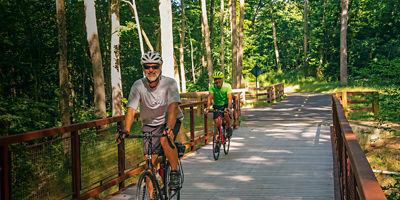
Turn a corner and meet a long climb ahead: There’s always an intimidation factor, whether it’s on a rising road or trail; if you’ve been in the saddle for years, or are new to the sport. Even if the sight of a demanding ascent doesn’t trigger a cold sweat, you know there’s an incredibly hot one in store. Any way you look at it, riding up hills takes a lot of work—not to mention the right skills and a can-do attitude. With a little preparation and some key advice, you can improve your riding, get stronger, and learn to enjoy the grind.
Do: Know your gears
Familiarity with your bike will make riding up hills far easier. You don’t want to be fumbling with your gears, wondering which shifter does what, as the hill steepens and your ride gets harder. Know your gears, and use them. Shift early and often to match your abilities, the capabilities of your bike, and the demands of the climb.
Don’t: Be a big-ring hero
Sometimes your ego tries to convince you that you don’t need to downshift, that we should save gears for later in the climb. Your bike has gears for a reason: Use them. Don’t be afraid to shift down, reducing the pedal resistance and increasing your cadence. A higher cadence with an easier pedal stroke will keep you going longer to help you up steep hills—and help prevent you from tweaking or twisting your knee with strain.
Do: Go easy on your drivetrain while shifting
There are few things worse than hearing your chain pop, snap, and crack over your chainring and cassette. This happens when you try to shift while you are pedaling hard, with your chain under load. Instead, ease off the pressure on your pedal stroke when you shift (as if you’re letting off the gas to press the clutch on a manual car transmission), so that the chain can move without all of your weight and power pulling it taut. You’ll need some momentum to make this smooth shift happen, which can be a challenge on super-steep hill sections—again, shift early.
Don’t: Fall over
Sometimes, we push the bike and walk beside it. If a section is too steep and you feel yourself coming to a near stop, losing the balance of your bike, put a foot down and walk your bike. No shame; bruised pride is better than a bruised side. Keep going back to that hill and eventually you won’t need to put that foot down.























